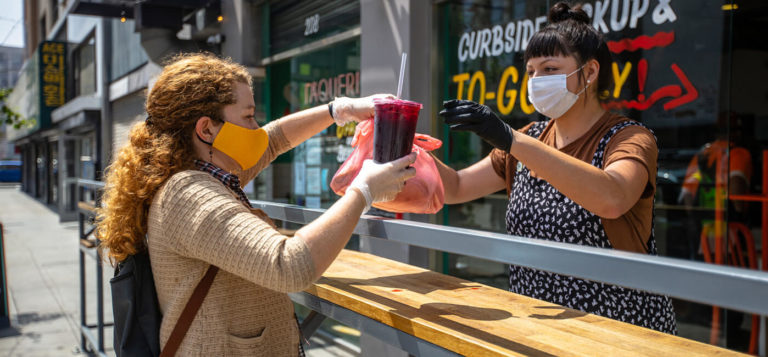Gone are the days of relying on physical travel maps or visitor guides to find restaurants, hotels, shops, and sights. When in a new location, people often turn to their mobile devices for tips and advice about where to go to next. This creates a perfect opportunity for businesses to tap into location-based marketing tactics to draw travel-weary consumers in-store and influence them during key decision making moments.
Many businesses have been experimenting with location-based marketing aimed at travelers. United Airlines, for instance, has pioneered the use of location in its app to help people find the nearest burger restaurant, family restroom, or ATM machine in several major airports. Four Seasons focuses on bringing in nearby tourists to specific hotels with room availability, and many restaurants have been making use of location-based marketing to offer specials, coupons and other incentives.
Since travelers need to find places to sleep and eat, hotels and restaurants are a natural fit for offering suggestions based on a consumer’s current location, as are museums, aquariums, and other tourist sites. But almost all businesses can draw in travelers, even if they’re not specifically travel-related. Many tourists like to go shopping, for instance, so retailers and specialty outlets can all benefit by reaching out to those on the go.
If you’re thinking about upping your LBS game for travelers, here are a few tips to get started.
Know Your Audiences
Do some research into the types of travelers likely to come through your area. Who are they? Where are they from? What kinds of activities interest them? How much money are they spending, and in what areas? Since you’re specifically targeting travelers, you’ll want to design a range of marketing strategies to appeal to people from different regions and backgrounds, and then match these campaigns to specific demographics and locations.
Deliver at the Right Time
You’ll want to think about when to market particular services, specials, or offers to travelers. If it’s a lunch deal, for instance, try to get that information to them sometime mid- to late morning, when they’re still making lunch plans. If it’s a special event, however, you might want to let them know about it several days or weeks in advance, as soon as you know they’re planning to travel to your area.
Brand Your Location-Based Marketing
Make sure to tie your location-based marketing to your overall brand presence, whether it’s through an app or social media. That means using recognizable logos, images, and slogans related to the rest of your print- and web-based marketing. At the same time, make your location-based appeals creative and unique,something that would make travelers eager to explore on their own terms.
Track and Analyze Conversions
One benefit of location-based marketing is that it lends itself to tracking and analyzing sales conversions. Using a coupon code with an offer, for instance, will help you to know who you’ve attracted, and when and where you reached them. Or you can use a service like comScore to track campaigns to business visits. These kinds of insights will help you as you revise and fine-tune your location-based marketing efforts in the future.
Travelers make an ideal audience for advertisers. People away from home are more likely to spend extra money, explore new venues, or try new activities. Thanks to the relevance of location-based marketing, just about any business can reach this influential demographic at the right time and place. How and when you appeal to them, however, is limited only by your imagination.





